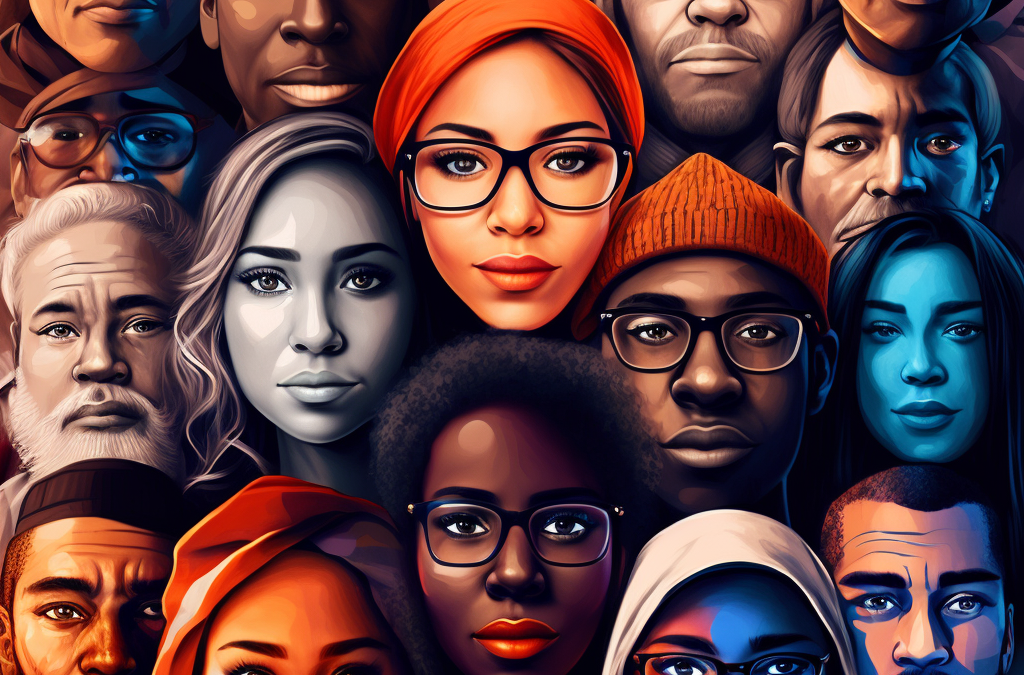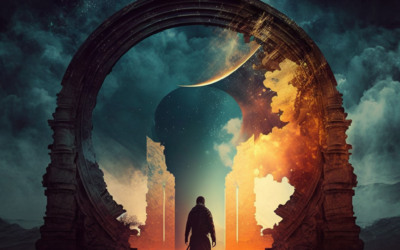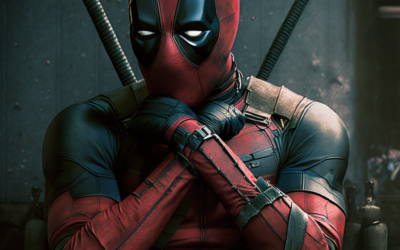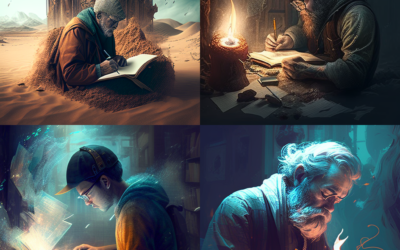The Diversity and inclusion In Storytelling
Diversity and inclusion in storytelling refers to the representation of a wide range of perspectives, experiences, and identities in literature, film, and other forms of media. It involves creating stories that reflect the diversity of the world we live in, and promoting inclusivity by representing and celebrating underrepresented voices and stories.
In the past, many stories and media representations were dominated by a narrow range of perspectives, typically reflecting the experiences of privileged groups such as white, cisgender, heterosexual, able-bodied people. However, as society has become more diverse and aware of the importance of representation, there has been a growing movement towards more diverse and inclusive storytelling.
Diversity and inclusion in storytelling can take many forms, including portraying diverse characters, exploring a range of cultures and communities, and addressing social issues and challenges faced by marginalized groups. This approach can help to foster empathy, understanding, and appreciation for different perspectives, and create a more inclusive and equitable society.
Diversity and inclusion in films and Digital media
Diversity and inclusion in films and digital media refers to the representation of diverse voices, experiences, and identities in movies, television shows, web series, and other forms of digital content. This involves creating content that reflects the diversity of the world we live in and promoting inclusivity by representing underrepresented groups.
In recent years, there has been a growing demand for more diversity and inclusivity in films and digital media, as audiences become more aware of the importance of representation. This movement has led to more diverse casting, storylines, and themes in movies and digital media, as well as the rise of new voices and creators from marginalized communities.
Diversity and inclusion in films and digital media can take many forms, including:
Representing a range of ethnicities, cultures, and races in casting and storytelling
Creating stories that explore diverse experiences, perspectives, and identities
Providing opportunities for underrepresented groups both in front of and behind the camera, such as hiring diverse directors, writers, and producers
Tackling social issues and challenges faced by marginalized communities in storytelling
Promoting accurate and positive representations of underrepresented groups in digital media.
By promoting diversity and inclusion in films and digital media, we can help to create a more equitable and representative society and ensure that everyone’s stories are heard and celebrated.
Why Diversity and inclusion in Storytelling
Diversity and inclusion in storytelling is important for several reasons:
Representation: Everyone deserves to see themselves reflected in the stories they consume, and diversity and inclusion in storytelling helps to ensure that underrepresented voices and stories are heard and celebrated. This representation can help to foster a sense of belonging and promote empathy and understanding across different communities and cultures.
Authenticity: Including diverse perspectives and experiences in storytelling can help to create more authentic and nuanced portrayals of different communities and cultures, and challenge stereotypes and biases.
Innovation: Diverse voices and perspectives can bring new and innovative ideas to storytelling, and help to push the boundaries of what we consider possible in literature, film, and other forms of media.
Social Justice: Diversity and inclusion in storytelling can also help to promote social justice by shining a light on systemic inequalities and social issues faced by marginalized communities, and by providing a platform for underrepresented voices to be heard and amplified.
Overall, diversity and inclusion in storytelling is important for creating a more equitable and inclusive society, promoting empathy and understanding across different communities, and celebrating the richness and diversity of the human experience.
Diversity and inclusion Storytellers
Diversity and inclusion storytellers are individuals who use their voices, platforms, and creativity to promote diversity, equity, and inclusivity in storytelling. These storytellers come from a variety of backgrounds and communities, and often bring their own unique perspectives and experiences to their work.
Here are just a few examples of diversity and inclusion storytellers:
Ava DuVernay: DuVernay is a filmmaker and producer known for her work promoting social justice and diversity in Hollywood. She has directed films such as Selma and A Wrinkle in Time, and is the creator of the hit TV series Queen Sugar.
Chimamanda Ngozi Adichie: Adichie is a Nigerian author and storyteller who is known for her powerful writing about race, gender, and identity. Her work includes the novels Half of a Yellow Sun and Americanah, as well as the TED Talk “The Danger of a Single Story.”
Lin-Manuel Miranda: Miranda is a composer, actor, and playwright known for his groundbreaking work in theater, including the hit musical Hamilton. His work often explores themes of diversity, identity, and social justice.
Roxane Gay: Gay is a writer, professor, and cultural critic known for her powerful essays and books about race, gender, and identity. Her work includes the best-selling essay collection Bad Feminist, as well as the memoir Hunger.
Ryan Coogler: Coogler is a filmmaker known for his work promoting diversity and representation in Hollywood. He has directed films such as Fruitvale Station and Black Panther, and is known for his thoughtful and nuanced portrayals of Black communities and experiences.
These are just a few examples of the many diverse and talented storytellers working to promote diversity and inclusion in their work. Their voices and perspectives are essential for creating a more equitable and inclusive society, and for ensuring that all stories are heard and celebrated.
Best Examples for Diversity and inclusion films all over the World
Here are some examples of great diversity and inclusion films from around the world:
- Parasite (South Korea, 2019): This dark comedy-thriller tells the story of a poor family who infiltrates the home of a wealthy family. Parasite explores themes of class, social inequality, and the struggle for survival in modern South Korean society. The film won the Palme d’Or at the 2019 Cannes Film Festival and the Best Picture Oscar in 2020.
- Bend It Like Beckham (UK, 2002): This British romantic comedy-drama tells the story of a young Indian girl who dreams of playing football, despite her conservative family’s expectations for her. Bend It Like Beckham explores themes of cultural identity, family expectations, and the challenges faced by young women of color in the UK.
- The Farewell (China/USA, 2019): This heartfelt and poignant film tells the story of a Chinese-American woman who travels to China to visit her dying grandmother, only to discover that her family has decided to keep the diagnosis a secret from her. The Farewell explores themes of cultural identity, family relationships, and the challenges of navigating the divide between different cultures.
- Y Tu Mamá También (Mexico, 2001): This coming-of-age film tells the story of two teenage boys who embark on a road trip with an older woman. Y Tu Mamá También explores themes of sexuality, class, and the complexities of human relationships in contemporary Mexico.
- Belle (UK, 2013): This historical drama tells the story of a mixed-race woman who grows up in aristocratic British society in the late 18th century. Belle explores themes of race, class, and identity, and challenges traditional narratives of British history.
- Moonlight (2016): This powerful and moving film explores the life of a young Black man growing up in Miami, grappling with issues of identity, sexuality, and social class. Moonlight was praised for its honest portrayal of Black masculinity, and won the Best Picture Oscar in 2017.
- Crazy Rich Asians (2018): This romantic comedy broke new ground in Hollywood by featuring an all-Asian cast and telling a story about Asian-American identity and culture. The film was a commercial and critical success, and is widely considered to be a milestone for Asian representation in Hollywood.
- Hidden Figures (2016): This inspiring film tells the true story of three Black women who worked at NASA in the 1960s, and played a crucial role in the American space race. Hidden Figures celebrates the achievements of these remarkable women, and shines a light on the systemic racism and sexism they faced in their professional and personal lives.
- Call Me By Your Name (2017): This beautiful and poignant film explores a same-sex relationship between two young men in Italy in the 1980s. Call Me By Your Name was praised for its sensitive portrayal of LGBTQ+ themes, and its celebration of the beauty and complexity of human connection.
- Roma (2018): This powerful and evocative film tells the story of a domestic worker in Mexico City in the early 1970s, and explores themes of class, race, and gender in Mexican society. Roma won numerous awards and critical acclaim, and was celebrated for its nuanced and compassionate portrayal of a marginalized community
These films, and many others like them, are powerful examples of the ways in which storytelling can celebrate diversity and promote inclusion across different cultures and communities. They remind us of the importance of hearing and celebrating all voices, and of the power of film to bring us together and inspire us to imagine a more equitable and inclusive world.
What is The Redemption Arc? How The Redemption Arc works in stories
The Redemption Arc The Redemption Arc is a character arc type that focuses on a character who starts off as morally ambiguous or even villainous,...
What is The Fourth Wall – What are the effective ways to break the fourth wall?
The Fourth Wall The fourth wall is a term used in theater, film, and television to describe an imaginary "wall" that separates the audience from the...
Write is Logline, what is formula of Logline
The Logline A logline is a brief summary of a movie, television show, or book that outlines the central conflict or premise. It is typically one or...




